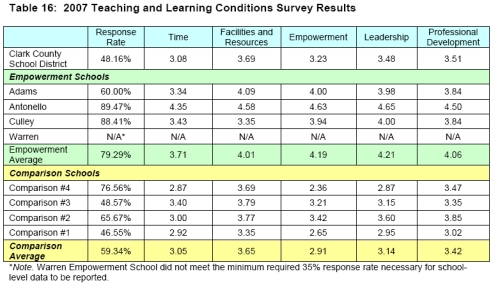Grading empowerment schools
So far, so good
- Thursday, June 25, 2009
Economists from Adam Smith to Frederick Hayek have realized that market prices transmit important information.
Prices tell us the relative value that people place on various goods and services, the relative scarcity of resources and much more. Prices allow the effortless coordination of activities of millions of individuals, at levels of complexity and efficiency far beyond what any attempt at central direction could achieve.
Unfortunately, however, throughout history governments have mangled these abilities of markets — injecting price controls, inflating currencies or in other ways attempting to ration goods and services. The result has regularly been the waste of scarce resources, economic stagnation and chaos, poverty and even — as observed in Communist countries — widespread starvation.
Government-run public education in America has long imposed on schools central bureaucracies that ration key resources, including teachers, textbooks and many more school supplies. Currently, Nevada is attempting to break away from this unworkable system, the primary source of the state's well-known K-12 problems.
The new approach — most advanced in the Clark County School District — uses the "empowerment school" model, which creatively exploits the intelligence naturally operating within market processes. Schools receive money for each student whose parents choose that school for their child to attend. Then the schools — not the central school district bureaucracy, but the principal and teachers working directly with the students — determine how best to spend the money.
Such a framework allows schools to put resources much more directly where they believe they will get the biggest bang for the buck. Thus principals and teachers in the empowerment schools have a real opportunity to maximize the school's effectiveness. Then, because parents choose which school their child attends, the schools get important feedback regarding whether parents judge them as more or less successful.
For the 2009-10 school year, CCSD will have 17 empowerment schools. It will be the first year in which the district's empowerment schools have been truly empowered to oversee their own budgets — though some restrictions still remain.
So, despite the restrictions, what kind of evidence do we have so far on the performance of CCSD's empowerment schools?
In 2007, the district commissioned a study to determine the effectiveness of the four empowerment schools existing at that time. In terms of student achievement, the results were mixed but promising. An expanded program with more years of data will yield more conclusive results. But in the meantime, survey data suggests empowerment schools are popular among parents, teachers and students alike.
During the 2006-07 school year, the district administered a community survey to staff, students and parents, asking them various questions about their local public schools. The survey responses of parents, staff and students to empowerment schools were quite positive.
CCSD also compared responses from empowerment-school participants to those from "comparison schools" — schools that CCSD had identified as traditional public schools closely similar in demographic makeup to the four empowerment schools.
Overwhelmingly, parents, staff and students at empowerment schools thought more highly of their schools than did the parents, staff and students at CCSD's traditional public schools.
Among empowerment teachers, 84.3 percent felt they shared in their school's decision-making process. The comparable number at traditional public schools was 64.6 percent.
Parents, teachers and students all believed that expectations for student achievement were greater in the empowerment schools. Of teachers at empowerment schools, 91.8 percent felt that they had high expectations, compared to just 78 percent of teachers in traditional schools.
Students and teachers also noticed better behavior and attendance at the empowerment schools: Empowerment teachers answered positively at a 95.3 percent rate, compared to just 82.6 percent at traditional schools. Among students, 87.6 percent answered positively at empowerment schools versus 81.6 percent at traditional schools.
Interestingly, teachers were more likely to respond negatively to empowerment schools on the cleanliness and safety of the school. Students, too, felt like the empowerment schools were less clean and safe. One factor may be the neighborhoods in which the first four empowerment schools were located. Additionally, empowerment schools either then had or now have no control over the janitorial staff responsible for maintaining a clean environment. Nevertheless, the difference among students surveyed was less than 3 percentage points for each category.
Finally, teachers at empowerment schools felt better about their time at work, the resources available to them, the schools' leadership and their own professional development (see table 16 below). Empowerment-school teachers not only felt more confident about their work environment vis-à-vis teachers at comparison schools, but also felt more positive than teachers of the school district as a whole.
It will be several years before the effectiveness of Nevada's empowerment-school programs can receive more comprehensive analysis.
Nevertheless, this is an increasingly auspicious beginning.
Patrick R. Gibbons is an education policy analyst at the Nevada Policy Research Institute.

*Note: CCSD's report highlighted, in green, when responses were more positive for the empowerment school than for the traditional school. However, NPRI notes that there were several instances when the proper highlight was missing even though the response was more positive at the empowerment school than in the traditional school. NPRI corrected the chart in the graph above.






